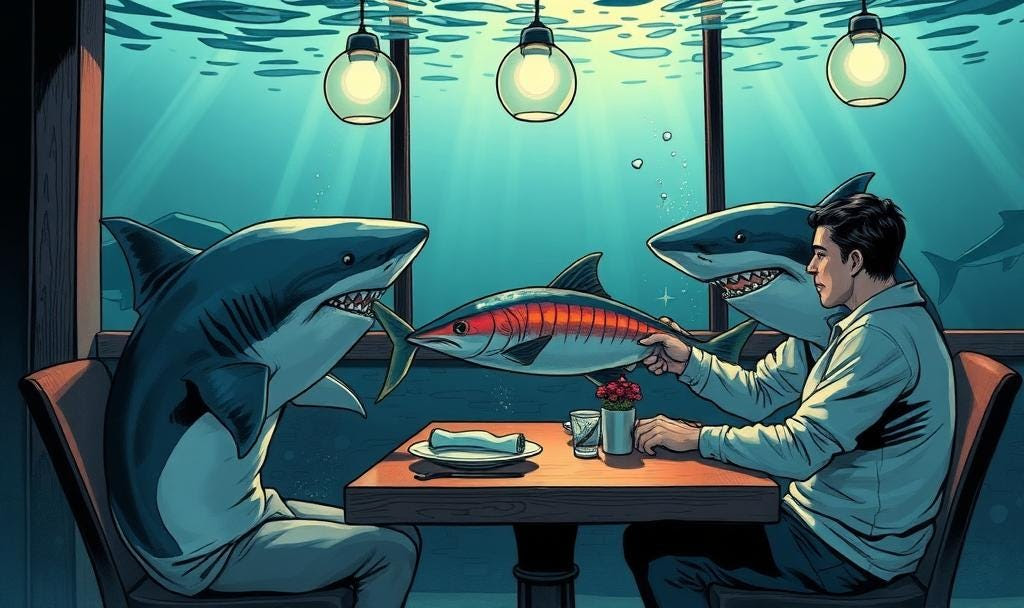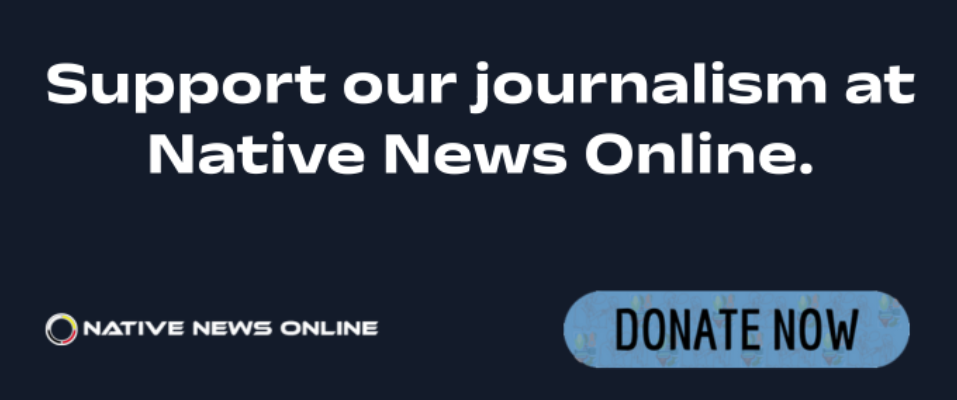
- Details
- By Professor Victoria Sutton
Guest Opinion. Altruism is helping without a benefit and sometimes at a risk to one’s self. Animals helping others of their own species makes sense to perpetuate the species or help continue their own genetic line. However, when animals help humans (the apex predator) it seems a bit more unexpected.
Recent research that found killer sharks offering food to humans indicate more deeply how altruism exists in the Animal Kingdom in more ways toward humans than we may have once thought. Altruistic behaviors from wild animals attempting to provision humans are extremely rare, according to researchers, yet they observed 34 cases of killer whales (Orcinus orca) offering food or other items to humans who were either in a boat, in the water or on shore. The types of food ranged from mammals, to fish, to birds, to reptiles to seaweed. These researchers concluded this was a type of “generalized altruism.”
In extremely rare cases, abandoned human children have been provided food by wolves or primates.
In 1984, researcher Dan McSweeney was following a group of false killer whales off the Kona Coast and slipped into the water with a mask, a small scuba tank, and an underwater camera. Two black shapes moved below, vocalizing. Dan turned, and a third individual was swimming rapidly toward him, carrying most of a large ‘ahi, a yellowfin tuna, weighing over 45 kilograms (kg) (100 pounds [lbs]). The whale stopped a couple of metres away and opened its mouth, letting the fish go, and the momentum carried the fish toward Dan. The whale was obviously offering the fish to him, and Dan reached out and took it. The false killer whale started blowing bubbles, moved away, then turned rapidly and came back, stopping next to him again. Dan pushed the fish back toward the whale; it took it slowly and deliberately, then moved away and joined its companions. The whales passed the fish back and forth and started to consume it, and all had a share. (p. 27)
Wolves
In extremely rare cases, abandoned human children have been provided food by wolves or primates. Stories at least since the 1300s have documented children that were given food and safety by wolves or primates. Still, this is extremely rare, it apparently does happen.
Birds
Crows and magpies are also known to bring gifts to a human who has cared for them when they were injured or fed them. This could be seen as a reciprocal behavior but the behavior also occurs when there is nothing given in return, much like the shark food gift. John Marzluff and Tony Angell write about these and other behaviors in Gifts of the Crow (2012), which is anecdotal, but there are many such case studies.
Dolphins
Stories about dolphins saving humans from drowning or from attacks by sharks go back to ancient Grecian stories. In 2023, Martin Richardson was swimming in the Red Sea when a Mako Shark attacked him biting him five times and he was at that point waiting to die. Then the shark stopped. He realized he was surrounded by a pod of dolphins that saved his life, blocking the shark from continuing the attack. A life boat arrived and he was rushed to the hospital where he received 3300 stitches, but believes he would not have survived without the dolphins’ aid.
Elephants
Elephants have been documented in demonstrations of empathy toward one another of their species, mourning their dead and even returning to burial grounds years later. But elephants have also shown altruistic behavior toward humans. In one documented case, a man was injured in the field and when his colleagues went out to find him, they found he was being guarded by an elephant. The injured man who was unable to walk later explained that the elephant looked after him all day and helped him move with her trunk.
Why do these animals act altruistically toward us?
Altruistic behavior is hard to explain when it does not provide any benefit to the individual or to their species. But there are several indicators that tend to predict altruistic behavior.
Studies that have shown dolphins are capable of mirror self-recognition indicate they have self-awareness. Having self-awareness is considered to correlate with empathy and altruistic behavior. In fact, dolphins showed this indicator of self-awareness earlier developmentally than either chimpanzees or humans. Humans first show self-awareness using a mirror between 12-15 months of age; while dolphins exhibit this behavior in the first few weeks of life.
Elephants have also demonstrated this indicator of self-awareness with mirror recognition, so we know they have the characteristics that are also present with altruistic behavior.
Native American Storytelling
These real stories of altruism from animals are reminders of stories that relate animal altruism. A Cree story relates a wolf that selflessly helps a family survive and he becomes the first dog. The rainbow bird in a Lenni Lenape story carries fire back to warm humans, and in the process, singes its beautiful feathers in order to carry the fire. Traditionally, reciprocity for kindness is part of the teaching of the stories.
Our reciprocity?
When animals are engaging in these various altruistic behaviors toward humans, are they strategizing for more favored treatment, or genuinely considering that some humans need help to survive? One question that did not get answered with the previous research is whether we can expect this behavior from all individuals in that species, or whether it is the rare individual that exhibits altruistic behaviors toward humans. Whatever the answer, as humans, we should have some reciprocity in this exchange. Certainly these behaviors have earned our respect and maybe we should treat these animals with more respect. From a legal perspective, maybe they should have more rights that go with that respect? Animals are considered personal property in common law (wild animals may be public property in some cases), and the price of a pelt or the cost of their meat are the only damages that are due for killing one of them. Abusive harm to an animal might get one a criminal conviction but it would be the rare set of facts that would result in a felony.
So as we learn more about altruism, human reciprocity might be in order, starting with respect that can be enforced with our human-made legal system.
To read more articles by Professor Sutton go to: https://profvictoria.substack.
Professor Victoria Sutton (Lumbee) is Director of the Center for Biodefense, Law & Public Policy and an Associated Faculty Member of The Military Law Center of Texas Tech University School of Law.
Help us defend tribal sovereignty.
At Native News Online, our mission is rooted in telling the stories that strengthen sovereignty and uplift Indigenous voices — not just at year’s end, but every single day.
Because of your generosity last year, we were able to keep our reporters on the ground in tribal communities, at national gatherings and in the halls of Congress — covering the issues that matter most to Indian Country: sovereignty, culture, education, health and economic opportunity.
That support sustained us through a tough year in 2025. Now, as we look to the year ahead, we need your help right now to ensure warrior journalism remains strong — reporting that defends tribal sovereignty, amplifies Native truth, and holds power accountable.
 The stakes couldn't be higher. Your support keeps Native voices heard, Native stories told and Native sovereignty defended.
The stakes couldn't be higher. Your support keeps Native voices heard, Native stories told and Native sovereignty defended.
Stand with Warrior Journalism today.
Levi Rickert (Potawatomi), Editor & Publisher

